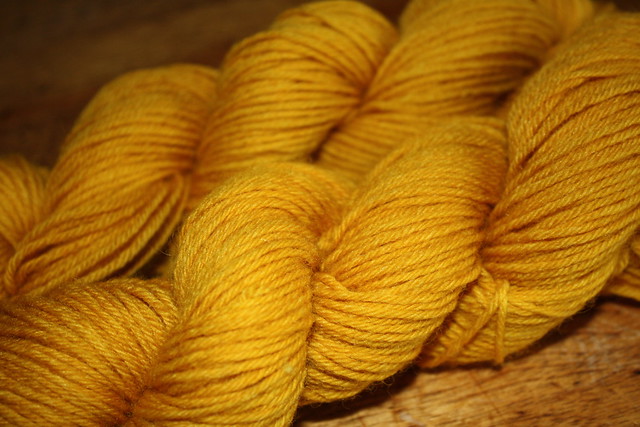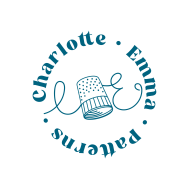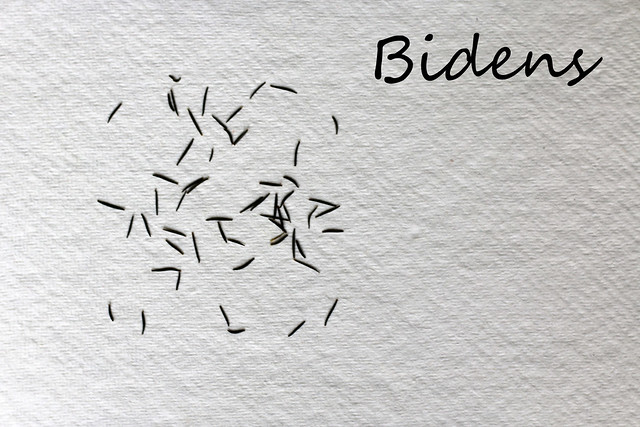As part of #naturallydyedwardrobe, I’ve been busy buying seeds.
We’re lucky to have a small garden where I can plant dye plants, but many would be suitable to grow in a pot on a balcony, or indoors.
I’ve ordered six different types of seed, I had to stop myself from buying any more at that point by reminding myself that I need to find room for all of these in the garden, and time to care for them…
Most leaves and flower heads will produce a dye, in a yellow, olive or brown. However, I’ve stuck to plants that are popular amongst dyers for (hopefully) more reliable results.
Ivy / Bracken (yellow-green)
In addition to the new plants I’m adding, I might also take advantage of two plants already growing in my garden.
Ivy is one of the plants whose leaves can produce green dye, although they also produce yellow-golds, and, with the addition of iron as an after-mordant, the dye can be closer to grey/black. My garden is full of ivy so I might as well put some to a good use.
We have tons of Bracken in our garden. It’s fronds produce a green dye, and I’ve read that they produce the best dye in the Spring, when the new fronds are unfolding.
I’ve picked Biden as it produces a strong orange, and can do so with a low plant-to-fiber ratio (1:1; 2:1 being more typical). It’s also quite a hardy little plant and easy to grow in the garden or a pot (the seeds I bought recommend it for hanging baskets).
Marigold (yellow – brown)

Photo source
All varieties of marigold produce dyes in shades of yellows and browns. They are another plant that is ideal for pots, and are also a good pollinator. Personally I try to stick to insect-friendly plants when adding to my garden, so that was also an important factor for me when I was selecting what to grow.
Yarrow produces yellows and greens on wool, although it typically dyes a pale yellow on cellulose fibres (plant-based, e.g. cotton, linen, hemp). Yarrow is a perennial wildflower and attractive to insects, including butterflies.
My local garden centre had Teasel seeds so I decided to include it. Teasel is a thistle-like plant so a nice contrast from the other plants I’ve included. It’s also attractive to insects as a source of nectar and to seed-eating birds. I’ve read online that dried teasel heads produce a blue dye, or yellow if used with alum as a mordant. I’ve also read that dried teasel heads were used for centuries as carding combs for wool.
Bee Balm (pink)
This blog post encouraged me to include Bee Balm in my dye garden. As a great lover of pink, I couldn’t resist a plant that produces a gorgeous pink dye. Bee balm also has the added benefit of attracting insects. It is a member of the mint family, and the wild variant (native to the US) has traditionally been used for medicinal purposes and as a seasoning.
Woad (blue)

Photo source
I couldn’t resist trying to grow woad as it is one of the important traditional dyes, and was the only source of blue dye for textiles in Medieval Europe. The leaves of woad contain the same dye as Indigo (Indigofera tinctoria), although in a weaker concentration which results in a powder blue dye. Woad has an important place in English history, Julius Caesar referred to Britons staining themselves with woad for battle, and Glastonbury’s name is said to derive from glastum or blue. Woad is a vat dye, which needs to be prepared in a different way to all the others I am planning to try; I couldn’t resist giving vat dyeing a try:)
In addition to growing my own little dye garden, I’m planning to take advantage of my mom’s well stocked garden. She has lots of plants suitable for dyeing, including Dahlias, Zinnia, and Raspberry and Tayberry fruit.
Do you have any other recommendations for good dye plants to grow, or plants you’ve had success with in the past?
This interview, with Katelyn Toth-Fejel from Permacouture, lists the following plants as a good starting point for developing a dye garden, and achieving a mixture of colours:
Woad for true blues
Madder for intense orange, scarlet and plum
Saint John’s wort for gold, maroon and green
Rhubarb for its fixative qualities
Sunflowers for deep olive greens
Hollyhocks for yellow, mahogany and reddish black
Purple loosestrife for gold, brown and black
Weld for strong clear yellow
Dyer’s coreopsis for deep yellows, oranges, browns and maroon
Lady’s bedstraw for orange, gold and pinky red
Also, check out this great blog post describing the seeds planted in a Brooklyn dye garden.
I bought most of my seeds from my local garden centre. I ordered woad and bee balm seeds from this Etsy shop, but haven’t yet received them so can’t yet comment on the quality.




